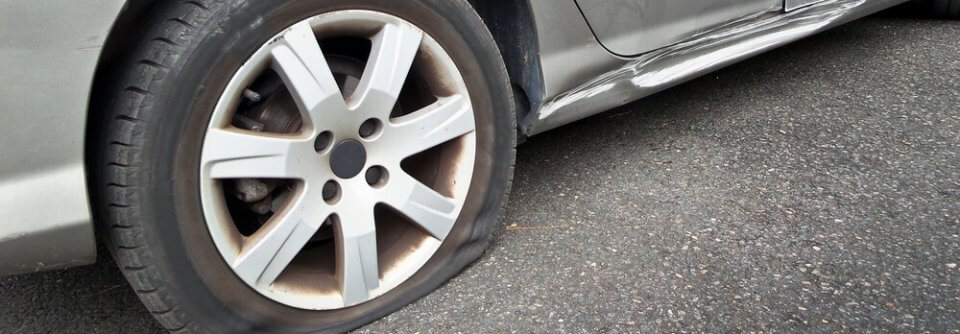
While it may sound like a silly question to most of us, some people actually wonder – why they shouldn’t drive on bald tires. After all, thousands of motorists drive on them every day. Higher auto insurance rates aside, because they haven’t had anything serious happen to them, they continue to do so. In the process, not only are they risking their own lives, but also the lives of drivers they share the road with.
A blowout at 70 m.p.h. can easily result in a crash, causing injury or worse. Of course, no one can predict if you’ll have an accident while driving on bald tires. However, statistics show that the risk of having a serious crash increases tenfold on tires that are void of any tread.
To be blunt – bald tires aren’t safe – for a number of reasons. Although you may not have had a flat or a blowout at high speed, bald tires can lead to a loss of control, hydroplaning, and understeering. In wet weather, the lack of decent tread can make you a dangerous liability as you could experience fish-tailing, a significant increase in stopping distance – even skidding off the pavement.
What constitutes a “bald” tire? Simply put – tires that are below the legal limit of 2/32” tread depth, which is the amount of rubber on the outside of a tire that meets the road. It wears off over time as you drive. Needless to say, tires make a big impact on how much traction your car has with the road. And, depending on your driving habits and miles you drive, the tread can wear quicker or slower. Either way, more traction equals more control.
Let’s face it, new tires can be expensive – but, is the risk of driving on bald tires worth it? It may be for a short while, until you can buy a couple of new tires. Still, you’re playing the odds – especially during the rainy season when hydroplaning can occur. And, as anyone who has ever been involved in a hydroplaning situation can attest, the loss of control on a wet surface can be a white-knuckle ride, because you don’t know where your car will take you before the tires hit the road surface again.
Newer tires have a tire wear indicator bar across the grooves of the tread. While these are barely visible when tires are new, they become more apparent as the tread wears down. Tests prove that – tires worn down 75% go about 50 percent further before stopping than the same tires with full tread. Plus, bald tires take almost twice as long to stop as identical tires when new.
One major factor to consider is that summertime heat can multiply your risk, mostly because rubber wears off more quickly when the weather is hot. And, when a tire is bald in the summer, it can create dangerous situations such as unexpected blowouts – leading to the possibility of a roll over.
Furthermore, worn tires can run over something and get punctured, causing a tire failure, which may otherwise not happen on tires with more tread.
According to National Highway Traffic Safety Administration’s Crash Causation Survey, tire related problems are responsible for 9 percent of all accidents. These could include tread separations, blowouts, bald tires, and under inflation.
If you wonder when to consider your tires as bald and in need of replacement, use the “Penny Test.” Just stick a penny upside down in the tread grooves. Should you see the top of Lincoln’s head, it’s time to go out and buy new tires.
Whether you’re looking to buy new tires or shopping for a new auto insurance company, you always want to compare prices. Freeway Insurance allows you to compare car insurance rates to find affordable car insurance. Call Freeway today at (800) 777-5620 or request a free auto insurance quote online to start saving money on your car insurance.



